
Everything to Know: Low Maintenance Front Yard Landscaping
Published: 11/01/2023 | Updated: 10/05/2023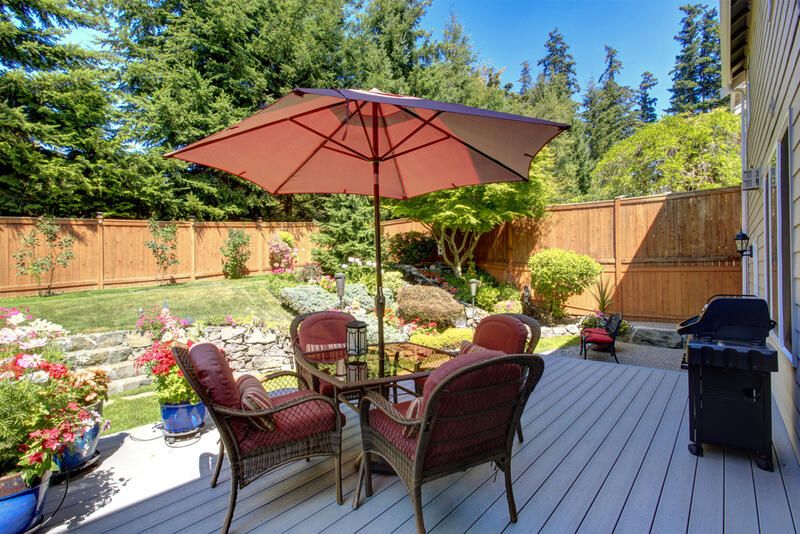
Have you noticed anything that needs to be done to the front or back of your house? Despite loving their beautiful yard landscape, many homeowners don't have the time to properly maintain them. Others lack the funds necessary to spend on gorgeous outdoor living spaces.


The good news is that improving your landscape doesn't have to take a lot of effort or money. You still have low-maintenance options even if you are a novice gardener. I'm not a very good gardener, and it seems like I destroy every plant I own. There are several low-maintenance plant ideas for you if you experience that feeling as well.
Which minimal care landscaping options are best for you depends, in part, on where you reside. No matter how adept you are at yard care and landscaping, there is a suggestion here for you. Some concepts might need a bit more time or expert assistance. not all of them, though. Several suggestions will have you unwinding and taking in your surroundings in no time. Discover the best low-maintenance landscaping suggestions for your front yard or back yard space by reading on. Let's get started
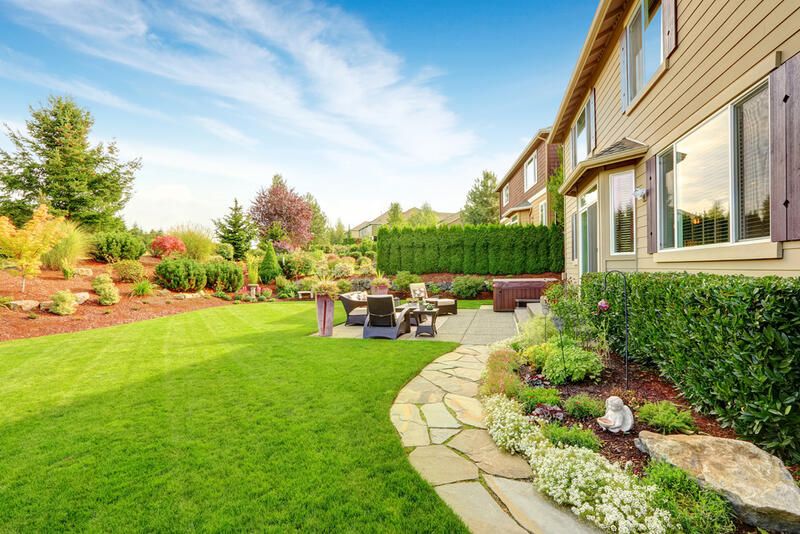
What Does Landscape Design Include?
Landscape design varies from one region to the next. If you are researching landscaping choices for your little front yard and believe that "landscape" and "low-maintenance" are mutually exclusive, fear not—they are, just like when landscaping a backyard. Hardscaping projects are not the only type of landscaping. Plants, grass, and pathways are all technically considered to be landscaping. In actuality, very little hardscaping is necessary to have a beautifully planted front yard you can spend time relaxing in.
Low Maintenance Front Yard Landscaping Ideas
These low-maintenance modest front landscaping ideas add aesthetic appeal without making you continuously weed, prune, or even water your front yard. These styles are for you if you frequently travel and don't want to return to a barren outdoor lawn area, or dull artificial grass or if you simply want something that looks excellent all summer long without requiring much work on your part.
These suggestions for front yard landscaping are especially suitable for tiny outdoor areas. As these exquisite front yards demonstrate, you don't need acres or a big lawn to pack a punch with some intelligent planting and hardscaping.
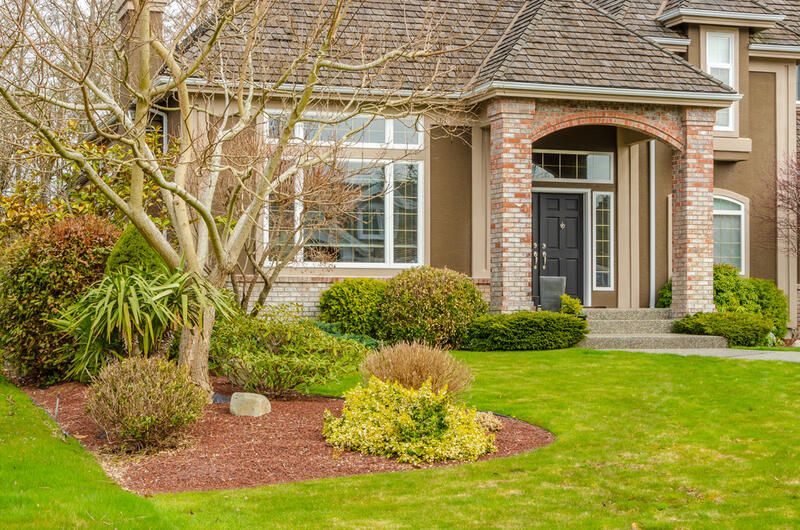
Stepped Design with Grass
The low-maintenance gardener's best friend is ornamental grasses. They have that contemporary, clean aesthetic that is currently in style, are simple and quick to cultivate, and seem bushy and lush even in the tiniest places. For a delicate and modern appearance, combine them with tall, wispy plants like African lilies.
We enjoy how the grasses soften the modern concrete hardscaping and how the steps have built-in lights for added drama at night.
Planted Wheelbarrow
If you favor the shabby chic or cottage style, a wheelbarrow stuffed to the brim with ivy and flowers you've planted can be the ideal complement to your yard. Any yard or house can use it, but a cottage-style home is an ideal match.
A variety of flowers, such as petunias, daisies, or any other hanging basket plant, are ideal for this idea. The ideal plant will overflow the side of the wheelbarrow. The best option would be to use a premium potting soil blend that holds water inside the wheelbarrow. Your flowers will benefit from this during the hot months.
Take Inspiration from Mediterranean Gardens
Mediterranean landscaping can work well for tiny front yards, and Mediterranean gardens are currently experiencing a tremendous renaissance. For a genuine Mediterranean/Spanish landscaped effect, if your space is even smaller than this, use simply two pots on either side of your entrance door and couple them with terracotta tile.
This is a fairly low-maintenance design; citrus trees are simple to nurture as long as you have a mild to warm temperature but they can withstand varying weather conditions and offer them big pots. The tile will endure for many years and doesn't require any specialized cleaning or resealing.
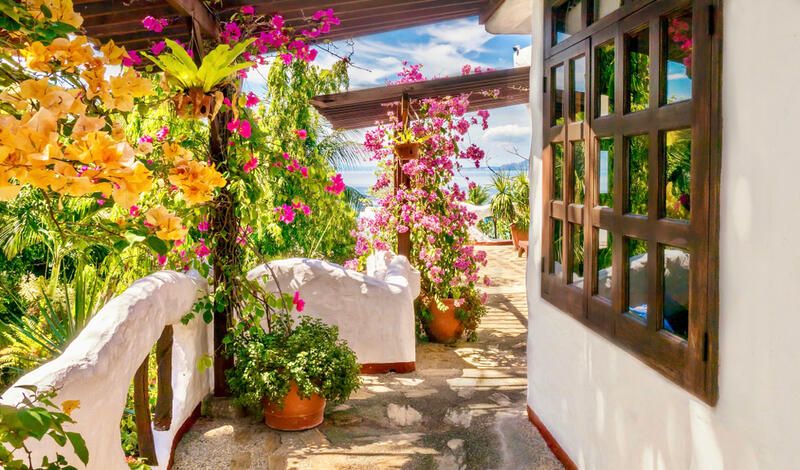
Use Succulents for Landscaping
For small front yards, succulents are the ideal low-maintenance plants. They look fantastic in a container or a front yard bed and offer lots of sculptural texture. For the greatest impression, group succulents of various heights, shapes, and colors immediately outside your house.
Additionally, succulents go well with water features, natural stone urns, and concrete hardscaping. For a sleek, modern look, plant them in little concrete troughs just at your front entrance. You can turn your home's façade into a live art piece by learning how to create a succulent living wall for even more drama.
Multi Seasonal Flowerbeds
Your flowerbeds will have a good variety of flowers that will last the entire year if you combine annuals and evergreens in them. By doing this, you can be sure that the hue in front of your house will always be consistent.
Combining evergreen plants with spring and summer blooms is a fantastic method to do this. Your luscious plants get a burst of green color from this. Your home becomes more inviting when you add a splash of color to the evergreen.
Including window boxes filled with the same kind of flowers will offer an extra touch. This unifies the aesthetic of your home and pulls guests' attention upward.
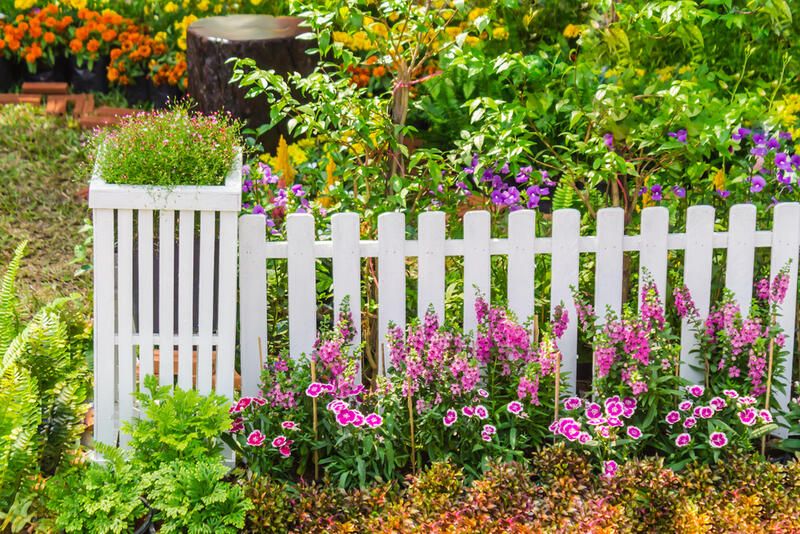
Use Pavers
A paved landscape is a way to go if you want a more formal, sophisticated appearance. Paving ideas are not just for backyards. Stone pavers will help you make a tidy border for your front yard, especially if it adjoins a shared lawn. Aside from a yearly cleaning using the best patio cleaner, pavers are also quite simple to maintain and clean.
Try Evergreen Borders
Due to its year-round greenness, many homeowners prefer to employ evergreens in their landscaping. They are also simple to maintain and look beautiful at all times. Given the lack of color in the winter, this is especially beneficial. As a result, a mulch border surrounded by evergreens around the front of your home is a great landscaping concept.
A small flash of color would be a wonderful accent to this border. A stunning show of color is produced by azaleas in the spring and summer. They come in a variety of hues, including white and Fuschia. These flowers may thrive in any environment. They don't generate any extra work or maintenance requirements.
Single Tree for Focal Point
A tiny front yard can be made interesting without having a lot of plants. Often, one strategically placed tree is sufficient. Japanese acers and dwarf cherry trees are among the greatest little garden trees, but any unusual-looking tree will stand out, especially if it is complemented with concrete landscaping or a large planter.
A large garden tree is yet another fantastic alternative for front yards with limited space. You may create a lovely landscaping effect with simply your tree's canopy, provided you pick a species that doesn't need a large plot of ground to grow in. Think about an acacia or a magnolia; they are both ideal trees for confined outdoor areas.
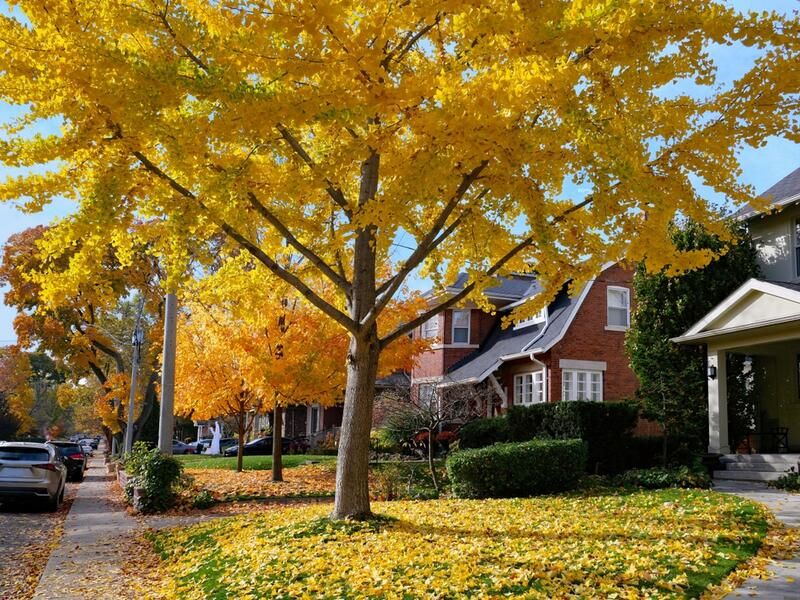
Window Boxes with Floral Detail
With a floral border and complementary window boxes, you can easily and effectively breathe new life into the front of your home. The border will attract more attention from visitors the more vibrant it is.
Petunias and hydrangeas are great options for flowers to use with this design. To ensure that there is green all year round, you should sprinkle in a little evergreen here and there. To connect them, the flowers in the flower bed and the window box should be the same.
Japanese-Inspired Garden Beds
Small, straightforward front yards are ideal for Japanese-inspired garden ideas. Gravel, slow-growing grasses, moss, and cedar and maple species provide a low-maintenance but gorgeous combination. These plans don't need a lot of room and may be executed in even the smallest front yards. Japanese plants also often need very little pruning, which means less work for you. absolutely no space? A Japanese Acer in a pot could be placed outside your front door; it can survive for many years in containers.
Raking the gravel is optional and only necessary for Zen-style gardens that employ very fine gravel, so don't worry about it. To achieve a similar look, simply use regular grey gravel; no raking is necessary.
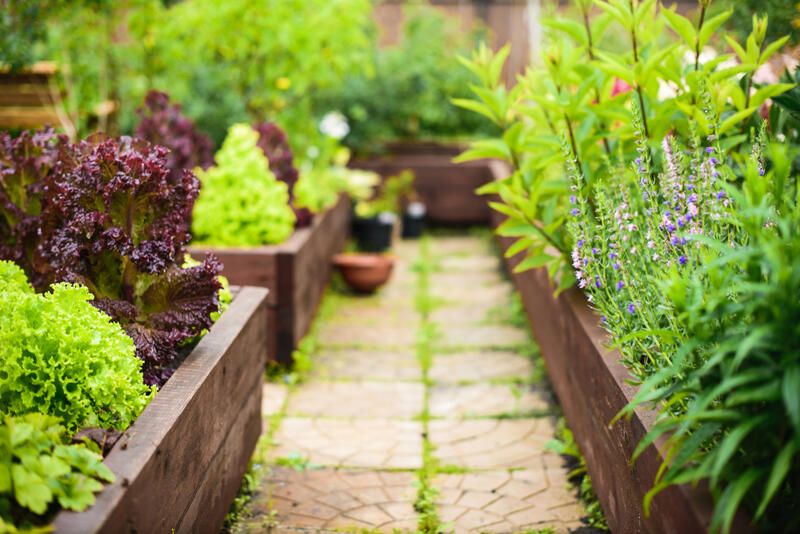
Use Herbaceous Borders
Add a few herbaceous perennials like lavender and rosemary if you want the traditional appearance of garden borders. These drought-tolerant plants always add a lovely contrast to grass, pathways, and roadways, softening the landscaping as a whole.
Almost any form of hardscaping in your yard, from striking concrete to conventional garden edging, complements lavender well.
Traditional Cottage Plants
Since English cottage gardens are often on the smaller side, modest front yards can easily adopt planting designs inspired by these gardens. If you want to get this look, avoid using a lot of hard landscaping; instead, create a gravel path and let cottage garden plants like rose, lavender, and hedges take care of the rest.
Your front yard will look well-kept if you use sculpted shrubs like box, juniper, or thuja, but they don't require much maintenance. The most maintenance these adaptable evergreens will require is an annual trim.
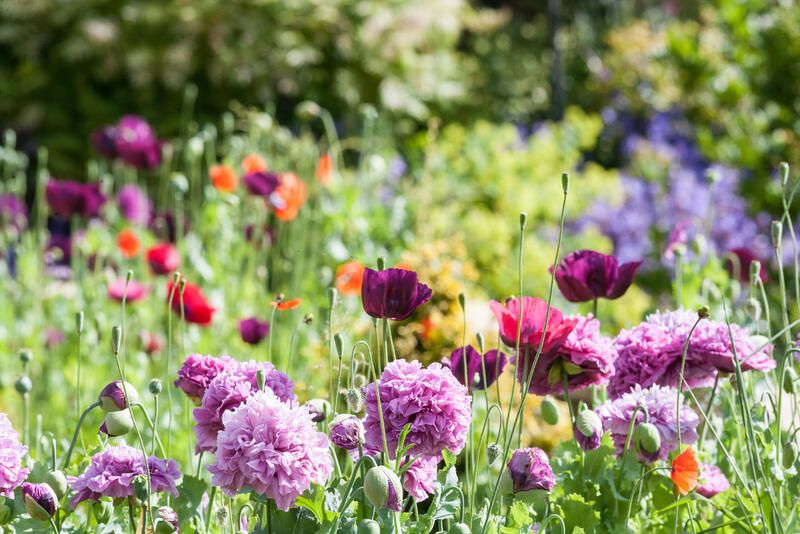
Climbing Wall
A trellis with climbing flowers is a nice accent if you don't have much space. In a smaller location, this adds a splash of color and curb appeal. Additionally, it enables the installation of flowers without requiring any additional ground area. Using plants with varying heights adds a beautiful cascading effect.
This is a fantastic suggestion; if you have an ugly space, cover it with flowers. Clematis is a great choice of flower. It is an alternative to ivy. You can pick from more than 300 different species.
The climate may cause minor changes in the blooms. It may be evergreen in warmer climates. It might be deciduous in colder climates.
Tips & Tricks to Make Your Garden Low Maintenance
Mow Your Yard Less
Mowing less is the key to having a beautiful lawn, but not in the way you may imagine. Many homeowners think that by waiting until the grass is too tall before scalping it, they might avoid having to mow again soon. Your lawn will slowly die if you mow it like that. The trick to having a healthy lawn that requires the least amount of mowing? Throughout the growing season, mow at a height that is consistent with your type of lawn (learn that from your local extension office). Never cut more than one-third of the length of a grass blade at a time, and leave clippings on the ground. Combining these techniques will enable you to maintain a healthy, low-maintenance lawn.
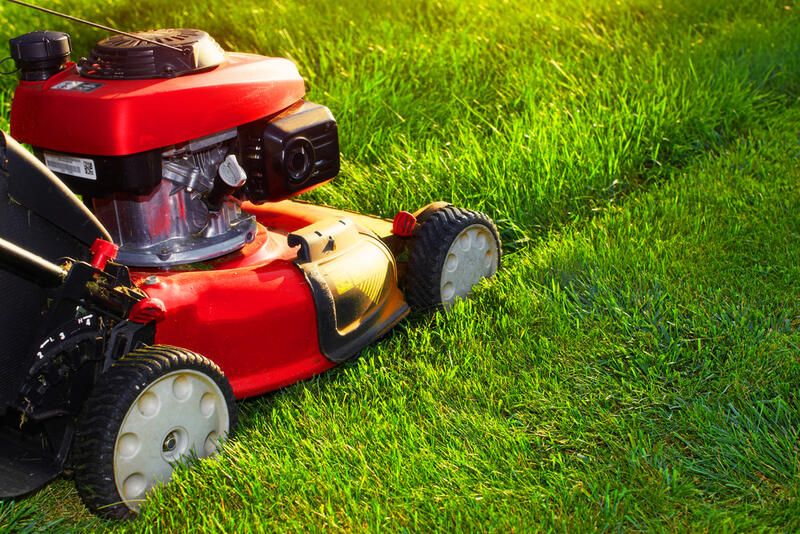
Hands-Free Watering
By adding an autonomous irrigation system, you can advance the level of low-maintenance care for your containers. This pot irrigation system comes with a hose and fittings that enable you to cut the hose and insert microtubing, which feeds water to the soaker hoses. It's a sophisticated system that functions effectively with fewer pots. As you operate the system, fittings may continually pop off because of excessive water pressure.
Try Automated Watering
Purchase the appropriate irrigation tools to make irrigation a hands-free task. Any planting bed can be automated with the use of simple dial-type timers and soaker hoses. Because water lands on a plant's root zone when using soaker hoses as opposed to overhead sprinklers, it also saves water. When utilizing irrigation timers, remember to switch the system off when it starts to rain.
Try Easy Care Containers
Container gardens bring movable brightness to outdoor spaces, but if you adore colorful pots, you also know that maintaining plants at their best might need daily care. Filling your containers with shrubs that provide vibrant color throughout the entire growing season is one method to speed up the maintenance routine. Shrubs often require less maintenance than annuals and thrive with just a little water. This pair of shrubs include Black Lace elderberry (Sambucus nigra 'Eva') and Bangle Dyers greenwood (Genista Lydia). Both of these shrubs flower in the spring, but the season is brightened by the leaves' vibrant color and varied texture.
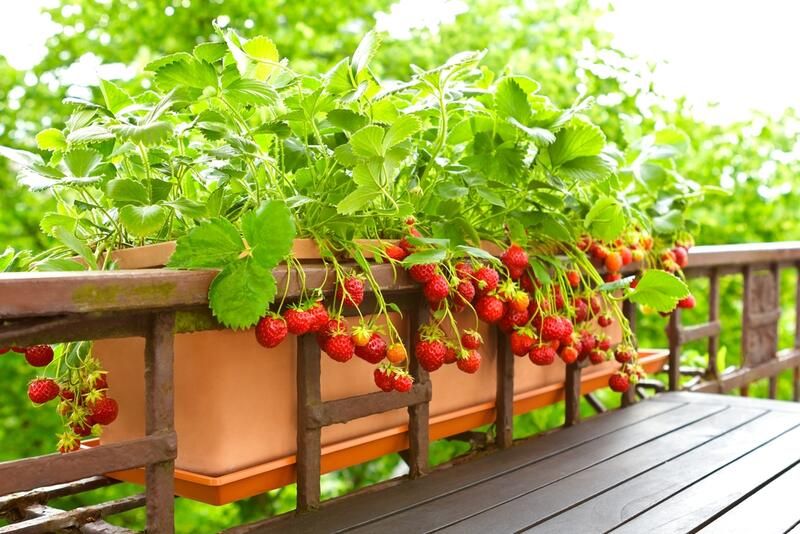
Mulching
The key to low-maintenance gardening is mulch. It will assist to inhibit weeds (less weeding for you) and decrease soil water evaporation when applied in a layer 2 to 3 inches deep (less watering for you). Apply a fresh layer of mulch as necessary to keep it at the right depth to maintain it. Mulch may need to be applied twice a year in warm areas. An annual mulch should be adequate in areas with chilly winters.
Composite Decking
Nothing beats unwinding on your terrace, whether you go for a family picnic or a hammock nap. Wood decking needs regular cleaning, bleaching, and staining. While retaining the warmth of wood, composite polymer decking lasts longer, stays cooler to the touch, and maintains its color. Even better, composite decking benefits the environment since every 20 feet of decking prevents around 30 pounds of plastic (often milk bottles and shopping bags) from entering landfills.
Prevents Weeds
Even while weeding is undoubtedly one of the most unpleasant tasks in the landscape, you may nevertheless make it less difficult. Start by weeding in small, manageable chunks to make it easier on your body and mind. Use the appropriate tools next. Invest in effective weeding equipment. When tackling tap-rooted invaders like thistle or dandelion, take into consideration tools like a digging knife, an Asian hoe, or an ergonomic weeder. Last but not least, weeds after rain or watering when the earth is damp, and weeds are easier to pull.
Nobody wants to spend their weekends weeding, and if you use a pre-emergent weed control, you won't have to. These weed-control methods prevent weed seed development and continue to work for weeks on end. They are simple to use and have a significant impact on weekly weeding. It's the most time-saving low-maintenance strategy for changing your landscape.
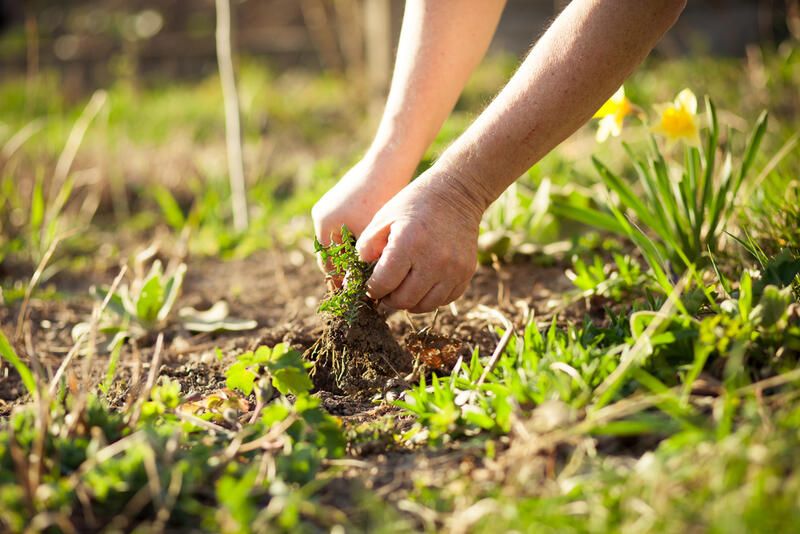
Select Plants Wisely
Consider where plants will thrive as you choose them for your landscape. Make sure to provide them with the appropriate quantity of sunlight, the right soil, and enough space to grow to their full size. Nothing is worse than growing a shrub that requires frequent pruning to fit your space. If a plant, such as this Black Lace elderberry (Sambucus nigra, which grows 6-8 feet tall and broad), catches your attention, conduct some short research to find out if any other, related plants would suit your location better. Laced Up elderberry is the best option for confined spaces because it only grows 6–10 feet tall and 3–4 feet broad, whereas Black Beauty elderberry grows even larger (8–12 feet tall and wide).
Play Your Ground
Replace thin or ingrowing turf with some low-maintenance ornamental or artificial grass and sedge in that location. Any yard would benefit from these plants' texture and year-round interest, yet taking care of them is easy. Most grasses may be kept in check with an annual trim, although sedges require relatively little annual maintenance. Pulling off dead stems and promoting new growth typically only requires a brief brush in early to mid-spring while wearing gloves.
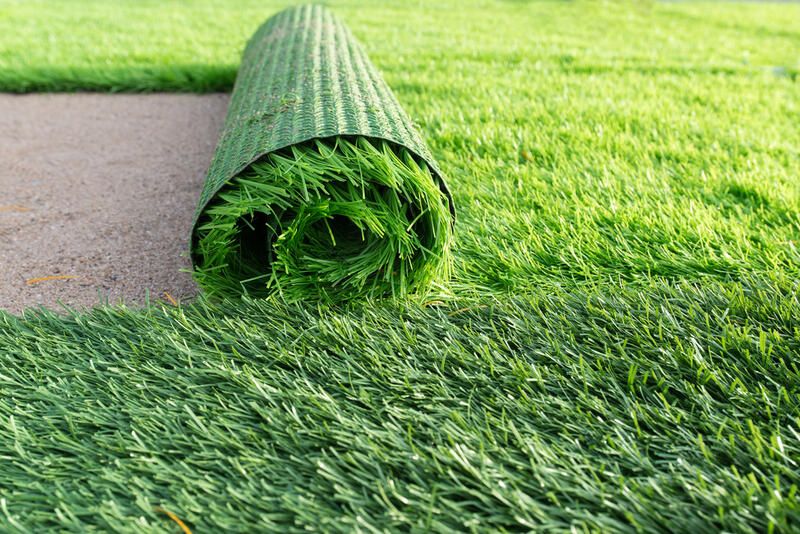
Use Turf Flowers
For a lawn to appear its best, a lot of time and effort must be invested. Maintaining beautiful grass requires year-round mowing, weeding, and feeding. Limiting the quantity of lawn you have is one technique to save time on lawn maintenance. Instead of turf, consider installing attractive planting beds filled with shrubs, perennials, and ornamental grasses. The fact that this bed is a rain garden indicates that it is exceptionally beautiful. Additionally, it aids in dispersing runoff from rain.
Perks to Low Maintenace Landscape
An attractive simple landscape doesn't have to consume all of your free time. You can achieve a beautiful low-maintenance yard without any more upkeep. Even with minimal effort you can enjoy that early spring morning coffee in your outdoor space and feel serene.
Your yard may blossom with beauty by streamlining landscape maintenance tasks, and your to-do list will get shorter. Trees, shrubs, perennials, annuals, and other plantings are combined in this front yard to welcome visitors. To make mowing easier, provide planting beds with a wide, sloping trench edge. You can avoid string trimming by simply lowering a set of mower wheels into the trench to clip the grass around the bed edge.
Always try and add visual interest and pick plants that are native to the area. Native plants are always top when it comes to planting selection as they are what is thriving in your region. Check with your local garden center as well as your USDA hardness level to find your native plants.
If you are looking for something extremely low maintenance, try artificial grass or artificial turf for a drought-resistant option. When it comes to choosing plants, go for succulents and cacti and try out a river rock landscape design!
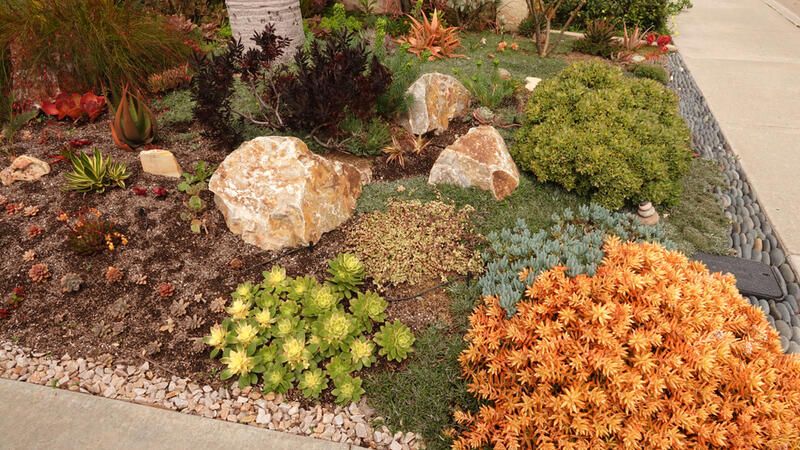
If you ever feel stuck or need help, check out Shrubhub.com for a free phone consultation and find out how easy yard work can be! We can help you take advantage of your backyard space and provide you with different low-maintenance landscape options. Try it now for 70% off!


